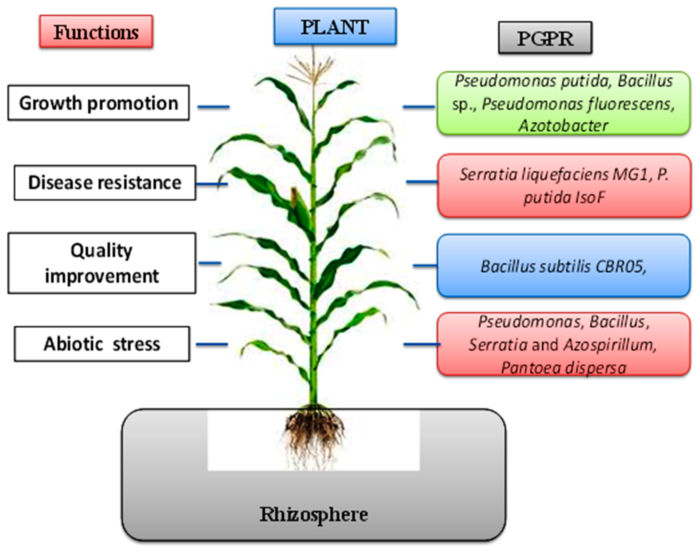Plants: Open Access Journal on Plant Science and Ecology: One of the two main classes of living things that is crucial to the biosphere’s ability to function is plants. There are plants in every known region of the world, coming in all different sizes and shapes. Green algae, mosses, ferns, vines, grasses, bushes, herbs, blooming plants, and trees are some examples of these. While some plants are parasitic, the majority use photosynthesis to make their own sustenance. Most plants start out as seeds. Plants have played a significant role in the food chain since prehistoric times. For nourishment, the earliest people collected wild plants. Food crops were grown as settlements grew, which led to the selection of cultivated types with large yields to feed the expanding people. Humans and other animals cannot produce their own food, in contrast to plants. Therefore,
depend on plants either directly or indirectly. Plants can be found in urban areas, agricultural areas, and natural environments like rain forests. They play a crucial role in maintaining a healthy ecology and providing us with food and clean air on a regular basis. The most intricate of interactions may be said to be the study of plants and their function. A seed goes through a variety of physiological processes from the moment it germinates, which can be carefully examined utilising contemporary equipment and molecular biological techniques. Millions of readers worldwide will have access to the knowledge thanks to an open access journal like Plants.
Introduction
In order to discuss how useful plants are to the planet, I would want to place them in various categories of importance.
Plants as a Source of Food:
One of the two main kingdoms of life is the kingdom of plants. They are the only living things that can harness the power of sunlight to grow their own food. Chlorophyll, a green pigment found mostly in plants’ leaves, is present in all of their cells. Through a process known as photosynthesis, this pigment enables plants to produce food from light, water, and carbon dioxide. Plants produce a lot more food than they can easily consume, and they conserve this extra food for later use in the form of leaves, stems, roots, fruits, or seeds. Both people and animals make use of this reserve supply. Despite the fact that many synthetic compounds can replace other components made from plants, there is no substitute for food made from plants.
On Earth, life could not exist without plants. For their basic needs, including food, clothing, housing, and medicine, people rely on plants. These fundamental human requirements are currently expanding quickly as a result of urbanisation, rising affluence, and increased population growth. Our diet is primarily composed of plants, and in many nations, rice or wheat is the main food. Interestingly, three plant species—wheat, rice, and maize—provide 60% of the calories that humans consume, which originates from 20 other plant species.
Carbohydrates, lipids, and proteins are the three basic nutrients that plants create; each is important to human and animal metabolism in a different way. Additionally necessary for overall health are mineral salts, organic acids, vitamins, and enzymes. Different plant parts can be consumed as food. Seeds and fruits, which are present in cereals and other tiny grains, legumes, and nuts, are the most significant of these for humans. These are highly nutritious and have a low proportion of water, which increases their value because they can be kept and
easily transported. In terms of importance as food sources, roots, tubers, bulbs, and other vegetables grown in the soil come next. They are less valuable since they have more water in them. Although plants’ leafy sections don’t store much food, they are nonetheless necessary due to the vitamins, mineral salts, and mechanical benefits of their indigestible cellulose. This also applies to fleshy fruits, which may contain a variety of organic acids.
The Environmental Impact
Since 10,000 years ago, when agriculture first emerged, plants have primarily been regarded as food sources. However, they have a much bigger, older, and more significant impact. Our atmosphere became the oxygen-rich air we breathe when photosynthetic plant life became a dominant force on earth. Plants release oxygen as well as carbon dioxide, which they employ to close the carbon cycle and reuse the CO2 produced by humans and other heterotrophs. The absorption of CO2 can lessen the impact of the greenhouse effect and climate change. Therefore, plants are crucial for preserving an ecosystem’s equilibrium and for driving the majority of significant biological activities.
Plants play a crucial role in the ecosystems they live in and enhance the surroundings. By continuously purifying the air, water, and soil they live in, plants enhance their ecosystem. The method of phytoremediation involves confining, degrading, or eliminating contaminants such solvents, insecticides, metals, crude oil, and its byproducts. Additionally, plants actively alter their surroundings by establishing local climates in forests and marshes and lowering the likelihood of natural disasters like droughts by holding onto ground water. In contrast, plant roots reduce soil erosion caused by wind and rain by stabilising the topsoil and regulating water flow.
Humans, however, do not always benefit their surroundings or efficiently utilise their resources, in contrast to plants. Unlike plants, which support various ecosystems, people have fostered artificial selection and caused extinction, which has led to a plethora of new issues. Less than 2% of the more than 300,000 plant species have undergone medical testing, despite the fact that more than a quarter of all contemporary medications are derived from plants. The World Health Organisation (WHO) states that 1.5 billion people are overweight and that more people die from obesity than from starvation, contrary to what we might think is the issue. Even when there is enough food to nourish everyone, hunger is caused by regional socioeconomic inequality, political upheaval, and economic policy. Many of these solutions are adaptable to problems that affect people. A long-term perspective
Plants are incredibly significant ecologically and are found all throughout the earth. Because they produce the oxygen necessary for life to begin, one may argue that plants are largely responsible for the emergence of aerobic life. Because of this, precautions must be taken to maintain the sufficient plant populations that are essential to our life.
Additionally crucial to controlling climate change on a global scale are plants. As more carbon dioxide is continuously released into the atmosphere, the surrounding environment becomes warmer. By turning carbon dioxide into oxygen through photosynthesis, trees are efficient at removing it from the air around them and, in certain ways, regulating the temperature of the environment. The atmosphere is heated in part by the light that the sun emits. The amount of solar energy absorbed by plants on the earth’s surface reduces the amount of heat reflected into the surrounding air.
Biodiversity:
For a variety of environmental reasons, plants are crucial. One plant species may be the sole source of food for some animals, and if that species were to disappear, the animal would likely perish. Because of this, we must work to protect the natural ecosystems that contain the native flora that these animals eat. One plant species may be related to one animal species, and it may be harmful to remove a complete ecosystem of living things if both are eliminated. Some creatures dwell among plants, which they see as their home. For instance, when a forest is removed to make way for farming, larger species like bears, deer, owls, etc. effectively lose their home. Additionally, these changes may result in the extinction of
Humans benefit from the aesthetic worth of the Earth’s biological diversity of plants, particularly the flowers that add beauty to our gardens. Trees supply a variety of important materials, including wood. Trees in particular can aid in the creation and preservation of soil. According to research, plant biodiversity can help to mitigate the consequences of climate change [2]. The biodiversity of the planet is in jeopardy since several plant species have recently been classified as endangered. A 2010 survey by the Royal Botanic Gardens in the UK found that 83,600 out of the 380,000 identified plant species (or 22% of them) are threatened [3]. More than ever, it is crucial to stop the loss of biodiversity and protect all plants.
Because of the sophisticated methods used in molecular biology and genomics, we now have a greater understanding of how plants perform in a given environment. The nature of plant interactions and classifications of some species, nevertheless, are continually shifting as a result of these advancements, which is an important subject we might deal with and understand from magazines like Plants.
This leads me to my next point: the significance of an open access plant journal at this time. Three key objectives are served by open access journals. First, it draws and publishes peer-reviewed articles of the highest calibre; second, it grants free access to the scientific community so they can read these articles whenever they want; and third, it grants free access to the general public so they can read articles that interest them. The reader will be better able to grasp the importance of plants and their sustainability in their ecosystem by learning about them through a scholarly journal that attracts research publications in a number of fields. This open access publication would be a platform for discussions about plants, their function, and relationships with other creatures, even though many journals cover these themes.
In 2012, all contributors will receive a free publication. I strongly advise all writers to take advantage of this kind invitation and submit their research works to Plants. Each piece will go through a thorough peer review process. Leading the peer review process are well-known scientists from a variety of fields who have deep experience in the majority of plant-related topics. Millions of readers worldwide will have access to your content as soon as it is accepted and published. We hope you will choose Plants as your primary journal for publishing excellent, cutting-edge research. In the realms of structural, functional, and experimental research, Plants will consider original research papers, mini reviews, reviews, letters, brief notes, and ideas for special and focused issues.

































